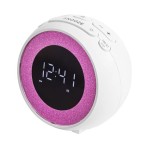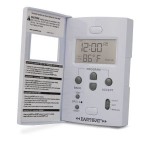Warm White vs. Bright LED: Essential Aspects to Consider
When choosing LED lights, understanding the differences between warm white and bright white is crucial. These two color temperatures significantly impact the ambiance and functionality of any space. This article explores the essential aspects to consider when selecting between warm white and bright LED, providing valuable insights to help you make an informed decision.
Color Temperature
Color temperature is measured in Kelvins (K) and indicates the warmth or coolness of light. Warm white LED lights typically range from 2700K to 3500K, emitting a cozy and inviting glow similar to incandescent bulbs. Bright white LED lights, on the other hand, range from 4000K to 5700K, producing a crisp and energetic light that often resembles natural daylight.
Mood and Ambiance
The color temperature of LED lights can greatly influence the ambiance of a space. Warm white light creates a relaxing and welcoming atmosphere, making it ideal for living rooms, bedrooms, and intimate settings. Bright white light, on the other hand, promotes alertness and focus, making it suitable for offices, kitchens, and areas where visibility is crucial.
Eye Strain and Comfort
Color temperature also affects eye strain and comfort. Bright white light can be harsh and cause discomfort, particularly when used for extended periods. Warm white light, with its lower blue light content, is gentler on the eyes and promotes relaxation.
Efficiency and Cost
When comparing warm white and bright white LEDs, efficiency and cost should be taken into consideration. Warm white LEDs tend to be slightly more efficient than bright white LEDs, meaning they consume less energy for the same amount of light output. However, the cost of LED lights varies depending on factors such as brand, quality, and wattage.
Applications and Use Cases
The choice between warm white and bright white LED lights depends on the specific application and use case. Warm white light is often preferred in residential settings, such as living rooms and bedrooms, where ambiance and comfort are prioritized. Bright white light is commonly used in commercial applications, such as offices and warehouses, where visibility and alertness are important.
Conclusion
Choosing between warm white and bright white LED lights requires careful consideration of the essential aspects outlined in this article. By understanding the differences in color temperature, mood, eye strain, efficiency, and applications, you can make an informed decision that best fits your specific needs and preferences. Ultimately, the right choice will enhance the ambiance, functionality, and overall enjoyment of your space.

Color Difference Between Warm White Daylight And Cool Superlightingled Com Blog

Color Difference Between Warm White Daylight And Cool Superlightingled Com Blog

Cri War Should I Go With Warm White Bright Or Cool 12vmonster Lighting

Choose The Best Color Temperature For Your Outdoor Lighting Knowledge Base Super Bright Leds

Color Difference Between Warm White Daylight And Cool Superlightingled Com Blog

Soft White And Other Led Color Temperatures Philips Lighting

Warm White Or Cool Integral Led

Soft White And Other Led Color Temperatures Philips Lighting

Warm White Vs Cool Which Should You Choose Electrical2go

Led Light Bulb Color Comparison 2700k 3000k 5000k Side By Demo Warm To Soft Bright White
Related Posts








